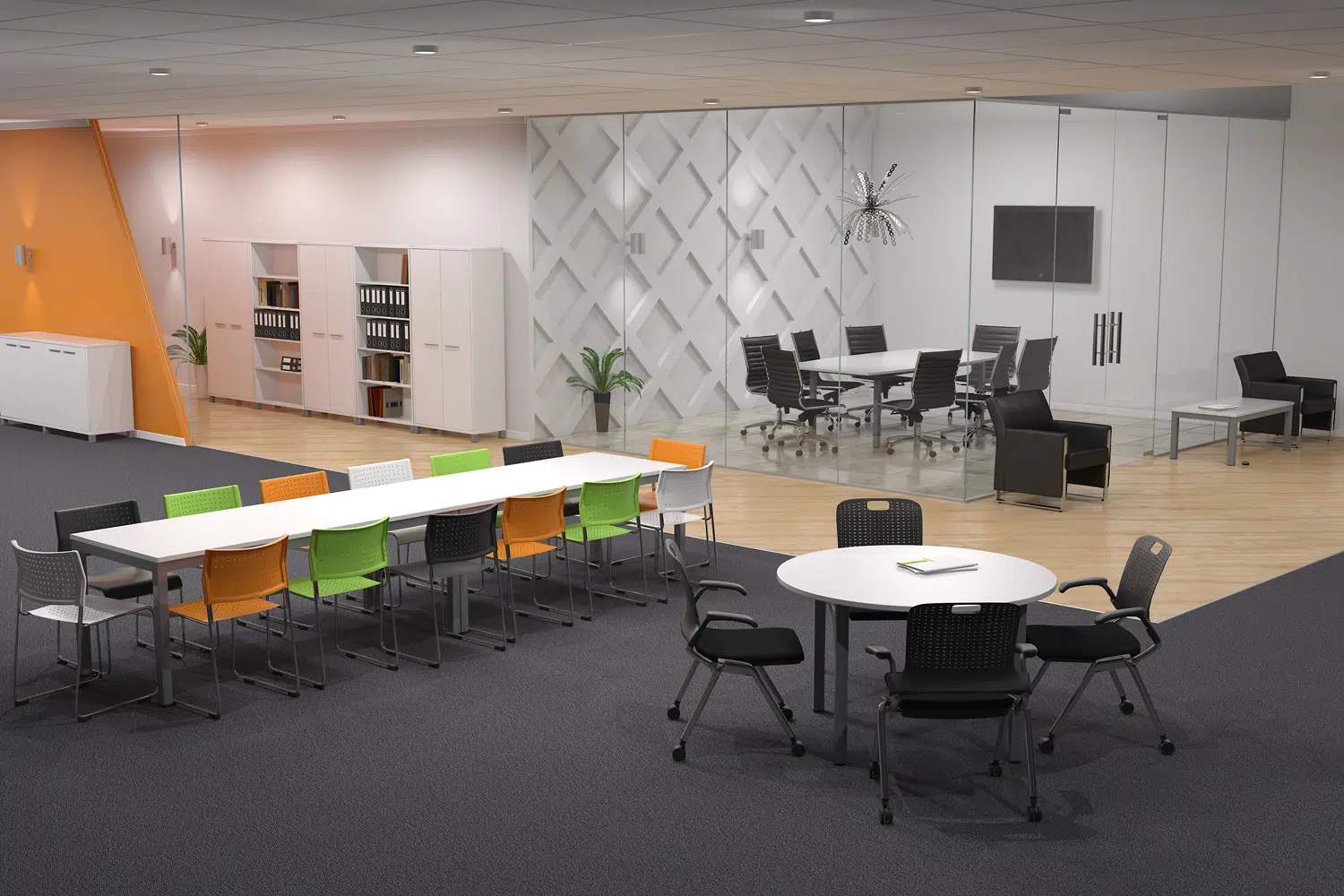
10 Jun 2019 Office Design Trends: Design Around Employee Types
2019 Office Design Trends: Design Around Employee Types
According to WorkDesign Magazine, “Workspaces should never cater to one particular age group, gender or race. Instead, a design must move beyond generalizations to support what it takes for employees to get a job well done. Good workplace design must support current and desired behaviors—like collaboration, interaction, invention, or production—today and into the future.”
Design Office Around Employee Personality Types
Are you a “heads down”, extremely focused company, or are you constantly buzzing with collaboration? Or a mix of both?
Most companies are now looking for a good mix of open and enclosed spaces for both active collaboration and quiet focus. To understand how to balance these needs, ask the employees for their input:
- Survey the whole workforce
- Conduct smaller focus groups
- Take the research to figure out the different types of employees and their individual needs
Design Office Around Different Work Patterns & Styles
- Soloist-Style: someone who spends at least 60 percent of their time inside the office and at their desk. This archetype needs a fully-equipped, ergonomic workstation with minimal visual and audible distraction, but they still need a few places nearby for ad-hoc brainstorming and problem-solving sessions with team members.
- Mixed-Style: Someone who spends at least 60 percent of their time in the office but is away from their desk for a good chunk of the day. This type of worker is far more collaborative and constantly interacting with people and teams.
- Mobile Mixed-Style: Someone who is in the office less than 40 percent of their time. They spend the bulk of their work week traveling between multiple sites and offices.
Don’t Forget the Introverts
According to Inc. Magazine, “Today’s workplaces are created primarily for the extroverts thanks to the development of an activity-based design. The original concept was meant to push people out of their cubicles and into environments that adapted to a specific type of work. But over the years, this concept has morphed into open offices, big collaborative spaces and the pressure to be connected 24/7. This focus on extrovert office design takes its toll on the other half of the workforce, disintegrating the quiet and isolation needed for deep, creative breakthroughs. Introverts make up almost 50% of the workforce. While extroverts are considered the “movers and shakers”, introverts are just as valuable for getting the job done, possessing key strengths such as creativity, focus, and grit that are often overlooked because they’re less vocal or visible.
Activity-based office design optimizes production and quality of work during certain activities. We need to take the concept of activity-based design one step further to recognize that primary activities are achieved by different work processes. For example, an extrovert’s idea of collaboration may involve a large round table in the middle of the main floor, while an introvert’s idea of collaboration is a huddle room with just enough space for two people and their laptops. (Same activity, but two very different approaches.)
Conclusion
The ideal space does not exist, but we must come close to it. Research about workplaces, the analysis of space utilization, as well as employee and employer expectations can result in well-fitting, custom-made workplace designs. Such designs draw heavily on measurements and data about the client company. These not only tell us how to divide the space based on the nature of the work, but also take into consideration the people in the company and their activities. “The variations of spaces and their combinations are endless, as are business types and the structure of employees.” – HBReavis
We are ready to help you configure the perfect workplace for your employees. Get in touch!
800.427.5811
info@rigroup-us.com
Sources:
- https://workdesign.com/2018/09/design-workplaces-for-all-generations/
- https://hbreavis.com/en/blog-article/what-would-be-the-ideal-workplace-type-nowadays/
- https://www.inc.com/jeff-pochepan/create-the-ideal-office-for-introverts-and-extroverts.html



















